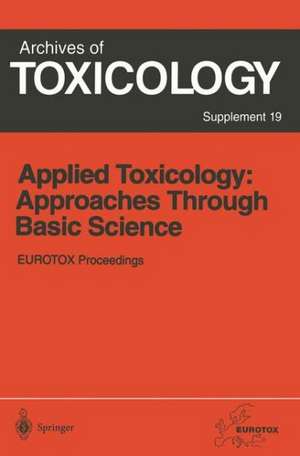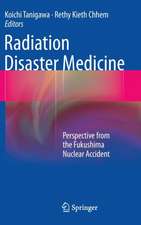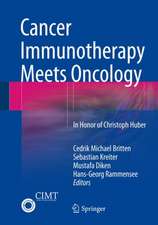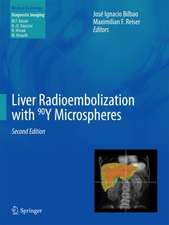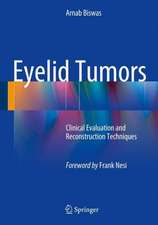Applied Toxicology: Approaches Through Basic Science: Proceedings of the 1996 EUROTOX Congress Meeting Held in Alicante, Spain, September 22–25, 1996: Archives of Toxicology, cartea 19
Editat de Jürg P. Seiler, Eugenio Vilanovaen Limba Engleză Paperback – 16 sep 2011
Din seria Archives of Toxicology
- 5%
 Preț: 725.07 lei
Preț: 725.07 lei - 5%
 Preț: 376.06 lei
Preț: 376.06 lei - 5%
 Preț: 729.42 lei
Preț: 729.42 lei - 5%
 Preț: 382.43 lei
Preț: 382.43 lei - 5%
 Preț: 720.47 lei
Preț: 720.47 lei - 5%
 Preț: 1096.98 lei
Preț: 1096.98 lei - 15%
 Preț: 641.71 lei
Preț: 641.71 lei - 5%
 Preț: 731.43 lei
Preț: 731.43 lei - 5%
 Preț: 724.50 lei
Preț: 724.50 lei - 5%
 Preț: 733.66 lei
Preț: 733.66 lei - 5%
 Preț: 1105.21 lei
Preț: 1105.21 lei - 5%
 Preț: 721.19 lei
Preț: 721.19 lei - 5%
 Preț: 732.36 lei
Preț: 732.36 lei - 5%
 Preț: 725.07 lei
Preț: 725.07 lei - 5%
 Preț: 725.79 lei
Preț: 725.79 lei - 5%
 Preț: 738.41 lei
Preț: 738.41 lei - 5%
 Preț: 732.92 lei
Preț: 732.92 lei - 5%
 Preț: 730.71 lei
Preț: 730.71 lei
Preț: 723.21 lei
Preț vechi: 761.27 lei
-5% Nou
Puncte Express: 1085
Preț estimativ în valută:
138.39€ • 147.98$ • 115.38£
138.39€ • 147.98$ • 115.38£
Carte tipărită la comandă
Livrare economică 17 aprilie-01 mai
Preluare comenzi: 021 569.72.76
Specificații
ISBN-13: 9783642645051
ISBN-10: 3642645054
Pagini: 432
Ilustrații: XII, 417 p. 2 illus. in color.
Dimensiuni: 155 x 235 x 23 mm
Greutate: 0.6 kg
Ediția:Softcover reprint of the original 1st ed. 1997
Editura: Springer Berlin, Heidelberg
Colecția Springer
Seria Archives of Toxicology
Locul publicării:Berlin, Heidelberg, Germany
ISBN-10: 3642645054
Pagini: 432
Ilustrații: XII, 417 p. 2 illus. in color.
Dimensiuni: 155 x 235 x 23 mm
Greutate: 0.6 kg
Ediția:Softcover reprint of the original 1st ed. 1997
Editura: Springer Berlin, Heidelberg
Colecția Springer
Seria Archives of Toxicology
Locul publicării:Berlin, Heidelberg, Germany
Public țintă
ResearchCuprins
The Gerhard Zbinden Memorial Lecture.- Genetic Polymorphism of Drug Metabolizing Enzymes. Implications for Toxicity of Drugs and Other Xenobiotics.- Detection of Chemically-Induced Changes in p53 Expression.- Looking at p53: Theoretical Implications and Methodological Aspects.- Norman Aldridge Memorial Symposium: Toxicologists versus Toxicological Disasters: Toxic Oil Syndrome.- Toxicologists versus Toxicological Disasters: Toxic Oil Syndrome, Clinical Aspects.- Epidemiology of the Toxic Oil Syndrome.- Analytical Measurements of Products of Aniline and Triglycerides in Oil Samples Associated with the Toxic Oil Syndrome.- Immunological Aspects of the Toxic Oil Syndrome.- Altered Gene Expression and Immunotoxicity.- Regulation and Mechanisms of Apoptosis in T Lymphocytes.- Immunoregulatory Genes and Immunosuppression by Glucocorticoids.- Molecular Aspects of UVB-Induced Immunosuppression.- The Use of Ecotoxicology and Human Toxicology in the Regulation of Chemical Safety in the European Union.- Options for the Regulation and Control of the Environmental Impact and Human Health Consequences of Chemicals in the European Union.- The Identification of Thresholds of Acceptability and Danger: The Chemical Presence Route.- The Identification of Thresholds of Acceptability and Danger: The Biological Route.- The Precautionary Principle and Science-based Limits in Regulatory Toxicology: The Human Experience, Individual Protection.- The Environmental Experience: Ecosystem Protection.- Is Sustainable Development a Practical Possibility Given the Continued Use of Plant Protection Products? — The Scientific View —.- Regulations and Risk Assessments on the Ecotoxicological Impact from the Use of Plant Protection Products in the European Union — an Industry Viewpoint.- Challengesin Analytical Toxicology.- Analytical Development for Low Molecular Weight Xenobiotic Compounds.- Air Pollution and Allergy.- Pollution and the Development of Allergy: The East and West Germany Story.- Nasal Lavage Biomarkers in Air Pollution Epidemiology.- Prediction of Individual Susceptibility to Toxicants.- Physiological Factors Predisposing to Neurotoxicity.- Cellular and Molecular Mechanisms of Cutaneous Toxicity.- Epidermal Cytokines and the Induction of Allergic and Non-Allergic Contact Dermatitis.- Validation of In Vitro Methods to Single Out Photoirritants Using Mechanistically Based Tests.- Assessment of the Phototoxicity Risk of New Drugs.- Progress in Antidotic Therapy.- Evolution of Antidotal Therapy in Recent Decades.- A Critical Review of Antidotal Immunotherapy for low Molecular Wight Toxins. Current Antidotes and Perspectives.- The Use of Antidotes in the Management of Central Nervous System Depression.- Antidotes: Availability, Use and Cost in Hospital and Extra-Hospital Emergency Services of Catalonia (Spain).- The Relative Efficacy of Antidotes: The IPCS Evaluation Series.- In Vitro Cell Models for Investigating Molecular Mechanisms of Toxicity.- In Vitro Investigation of the Molecular Mechanisms of Hepatotoxicity.- Protein Targets of Neurotoxicity.- Neuropathy Target Esterase (NTE): Molecular Characterisation and Cellular Localisation.- The Concept and Target of Promotion of Axonopathies.- Mechanisms and Models of Neurotoxicity of n-Hexane and Related Solvents.- Bovine Chromaffin Cells as in vitro Model for the Study of non-Cholinergic Toxic Effects of Organophosphorus Compounds.- Carcinogenesis Mechanisms in Transgenic Mouse Models.- Hepatic Tumor Induction in c-Myc mono-transgenic and TGF-?/c-Myc double- transgenic Mice.- Interactions of TCDDwith Signal Transduction and Neoplastic Development in c-myc Transgenic and TGF-alpha Transgenic Mice.- Lymphoma Induction by Heterocyclic Amines in Eµ-pim-1 Transgenic Mice.- Algal Toxins and Human Health.- Health Effects Associated With Algal Toxins From Seafood.- Cyanobacterial Toxins: Occurrence, Modes of Action, Health Effects and Exposure Routes.- The Young Scientist Poster Award.- Molecular Cloning of Neuropathy Target Esterase.
Textul de pe ultima copertă
This volume contains the main papers presented at the 1996 EUROTOX congress, Alicante, Spain, September 22-25,1996.
The understanding of toxicological events, such as the Spanish Toxic Oil Syndrome, or of intoxications by algal toxins draws heavily on the knowledge obtained from basic science. This is clearly reflected in the topics of Symposia and Workshops that deal with alterations in gene expression and immunotoxicity, prediction of individual susceptibility to toxicants, mechanisms of phototoxicity, protein targets of neurotoxicity, as well as mechanisms of carcinogenesis in transgenic mice. The application of basic science then allows better evaluation of the role of air pollution in allergy or a better assessment of progress in antidotic therapy. A pivotal role is fulfilled here by methodological aspects of the detection of changes in gene expression, challenges in analytical toxicology, or the development of in vitro models for the study of molecular mechanisms of toxicity.
The understanding of toxicological events, such as the Spanish Toxic Oil Syndrome, or of intoxications by algal toxins draws heavily on the knowledge obtained from basic science. This is clearly reflected in the topics of Symposia and Workshops that deal with alterations in gene expression and immunotoxicity, prediction of individual susceptibility to toxicants, mechanisms of phototoxicity, protein targets of neurotoxicity, as well as mechanisms of carcinogenesis in transgenic mice. The application of basic science then allows better evaluation of the role of air pollution in allergy or a better assessment of progress in antidotic therapy. A pivotal role is fulfilled here by methodological aspects of the detection of changes in gene expression, challenges in analytical toxicology, or the development of in vitro models for the study of molecular mechanisms of toxicity.
